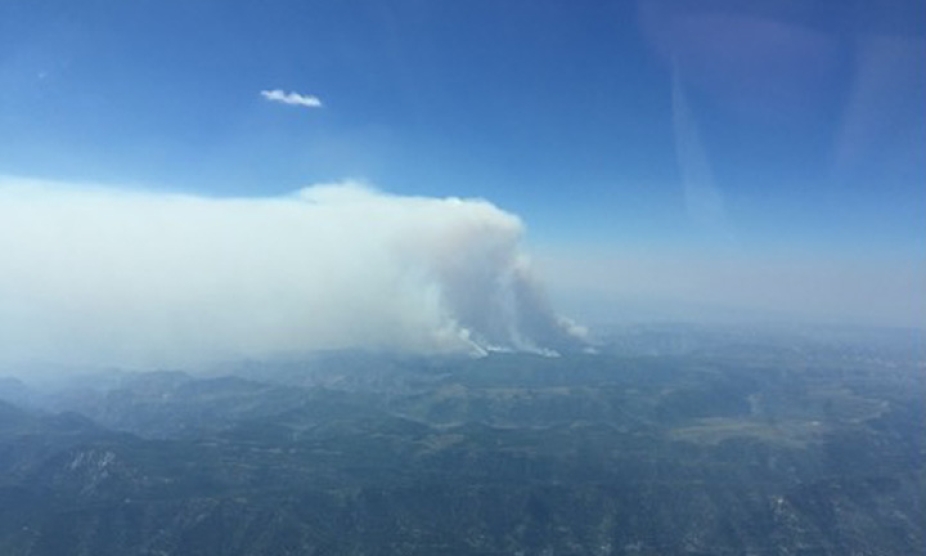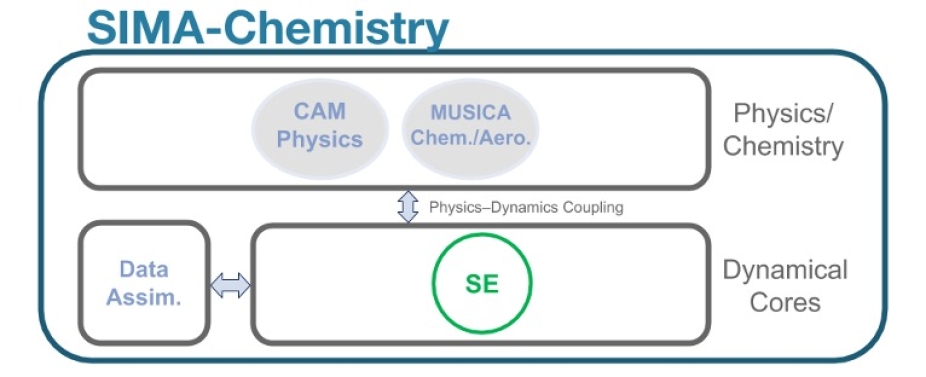Biomass Burning Effects on Air Quality, Weather, and Climate
How does biomass burning impact air quality and atmospheric chemistry from local to global scales?

Wildfire during the WE-CAN field experiment 2018 (Image: Frank Flocke)
Biomass burning, which includes wildfires, prescribed burning, agriculture fires, and residential wood combustion, is the largest combustion-related source of organic compound emissions to the atmosphere. Yet, the inability to model precisely the emissions, transport, chemical transformation, and fate of these organic compounds has meant that there are large uncertainties surrounding the true impacts of the fires on humans, weather, climate, visibility, and ecosystems.
A SIMA modeling configuration will allow for better predictions of biomass burning emissions and their impacts to enable extreme event risk assessment and to inform mitigation strategies. Air quality forecasts accounting for biomass burning will benefit from an advanced chemical data assimilation capability to constrain key constituents. The unique aspect of biomass burning is its strong interactions not only with land, vegetation, weather, and air quality, but also with climatic conditions. Thus, SIMA will provide high-resolution atmosphere grids, coupled to a sophisticated land model, in fire-prone regions. SIMA will also provide both regional context of weather and climate for burns and could reveal the affects of the biomass burning on urban areas and continental scales. An integrated SIMA tool for wildfire and biomass burning applications can this aid in the formulation of technological strategies and policy decisions to mitigate the occurrence and impacts of biomass burning, ranging from the development of early-warning systems for fire-prone regions in the Western United States to programs that accelerate adoption of cleaner cooking and heating fuels internationally. The capabilities introduced for biomass burning will also help in monitoring air quality in light of increasing background levels of ozone and particulates, in assessing spatiotemporal distribution of pollutants in mountainous and coastal regions, and in understanding the consequences of long-range transport of anthropogenic pollutants to the polar regions.

Schematic for SIMA Chemistry configurations including the regionally-refined Spectral Element (SE) dynamic core, data assimilation, CAM physics, and MUSICA chemistry and aerosols. Such a configuration will also couple a land model
Configuration
- 3-km refined mesh over E. Asia with chemistry, initialized (ACCLIP field project support)
- 3-km refined mesh over CONUS with chemistry, initialized (biomass burning)